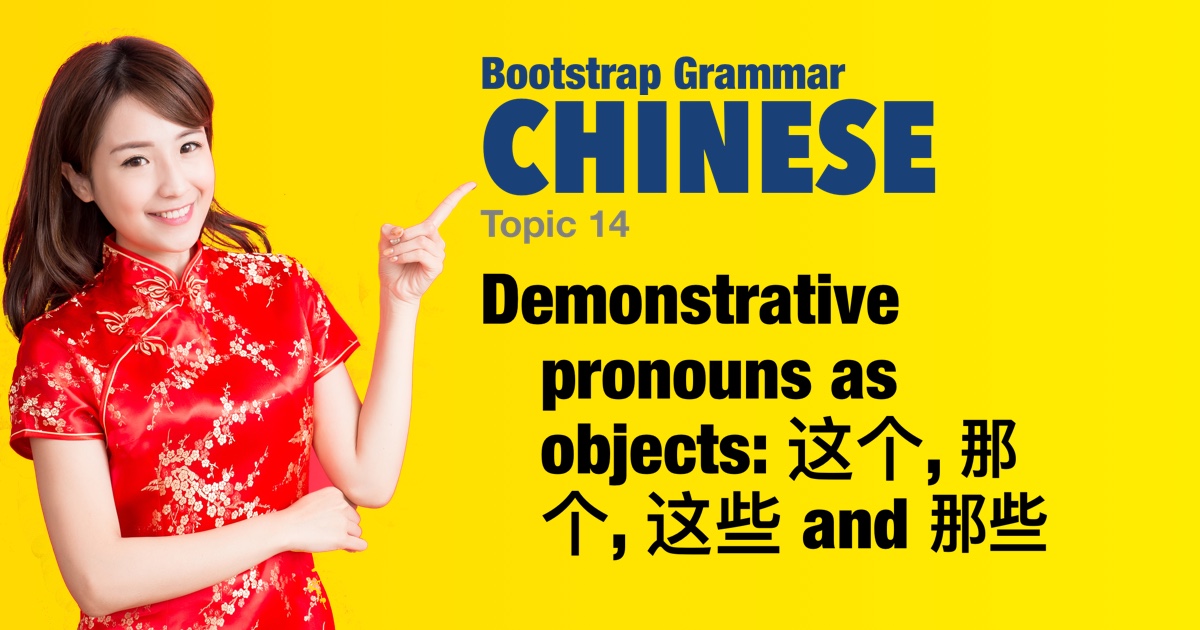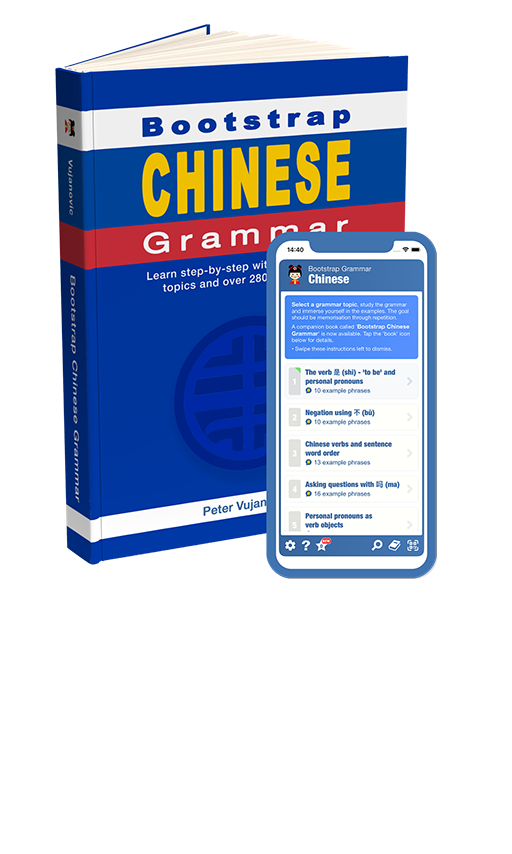Chinese grammar - Demonstrative pronouns as objects: 这个, 那个, 这些 and 那些 |
|||
|
|||
We saw previously that in Chinese, the personal pronouns don't change whether they function as the subject or object of a verb. However, the demonstrative pronouns 这 (zhè) and 那 (nà) operate a little differently. — As we saw, as subjects they can appear alone - for example: 这是书。- 'This is [a] book'. But as objects, the singular demonstrative pronouns need to be coupled with a measure word. — When asking a 'what?' question, the type of object is often unknown and so 这 and 那 are coupled with the general counter 个 (gè). The plural forms 这些 and 那些 can be used as objects without a measure word. |
| Examples: | |
|
我看不见那个。
wǒ kàn bú jiàn nà ge. I don't see that.
|
|
|
你喝那个吗?
nǐ hē nà ge ma? Do you drink that? |
|
|
她吃那个。
tā chī nà ge. She eats that. |
|
|
我喜欢这个。
wǒ xǐhuān zhè ge. I like this.
|
|
|
你不喜欢那个吗?
nǐ bù xǐhuān nà ge ma? Don't you like that? |
|
|
她喝那个。
tā hē nà ge. She drinks that. |
|
|
你吃这个吗?
nǐ chī zhè ge ma? Do you eat this? |
|
|
她喜欢那个。
tā xǐhuān nà ge. She likes that. |
|
|
我不吃那个。
wǒ bù chī nà ge. I don't eat that. |
|
|
你看见这些吗?
nǐ kànjiàn zhè xiē ma? Do you see these? |
|
|
他买那个。
tā mǎi nà ge. He buys that.
|
|
|
他们喜欢那些吗?
tāmen xǐhuān nà xiē ma? Do they like those?
|
|
|
他有这些吗?
tā yǒu zhè xiē ma? Does he have these? |
|
 |
|


 Note that
Note that 
